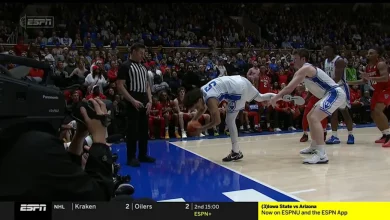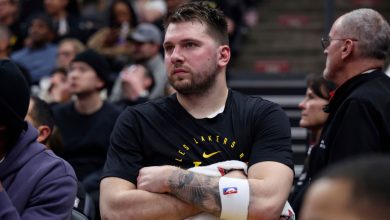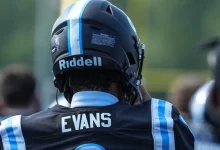Rich Rodriguez joked about turning down the Alabama job in 2006, saying, “Where’s my statue?” reflecting his bold decision.

In the world of college football, few decisions have been scrutinized as much as Rich Rodriguez’s 2006 choice to turn down the University of Alabama’s head coaching position. At the time, Alabama was one of the most storied programs in college football history, a team with a rich tradition, passionate fan base, and an ever-growing list of national championships. For many coaches, the opportunity to take over a program with such prestige would have been a dream come true.
Yet, Rich Rodriguez—a name synonymous with the spread offense and a rising star in coaching—decided to stay at the University of West Virginia instead of taking the reins at Alabama. This decision, while seemingly straightforward at the time, would reverberate throughout his career. And as Rodriguez jokingly put it years later, “Where’s my statue?”—a comment that both lightheartedly acknowledged the monumental decision and subtly reminded fans of how it ultimately shaped his path in college football.
The Rise of Rich Rodriguez
Before we dive into the specifics of the Alabama job offer, it’s important to understand the meteoric rise of Rich Rodriguez in the early 2000s. Rodriguez, a coaching prodigy with a unique vision for offensive football, had transformed West Virginia University’s program from an afterthought into a national contender. His spread offense—a system designed to spread out defenses and emphasize quick, explosive plays—revolutionized college football and caught the eye of many football programs across the country.
From 2001 to 2007, Rodriguez led the Mountaineers to consistent success. His teams were fast, dynamic, and unrelenting, and he established a reputation for building offenses that could outpace and outsmart even the most well-coached defenses. The Mountaineers reached national prominence during his tenure, culminating in a 2007 season that saw them climb to the top of the rankings, only to be stymied by a heartbreaking loss to Pitt in the final game of the season. Despite this setback, Rodriguez’s innovative offense and the success he brought to West Virginia had made him one of the most sought-after coaching candidates in the country.
Alabama’s Struggles and the Job Offer
Meanwhile, at the University of Alabama, the Crimson Tide were struggling to regain their place among college football’s elite. After the legendary tenure of head coach Paul “Bear” Bryant, Alabama’s dominance in the 1970s and 1980s began to wane. Despite a national championship in 1992 under head coach Gene Stallings, the program went through several coaching changes in the 1990s and early 2000s, failing to find the right leader to restore the program to its former glory.
In 2003, Mike Shula was hired as Alabama’s head coach, and while he had some success, he struggled to bring the program back to championship contention. By 2006, Shula’s seat was growing increasingly hot after a disappointing 6-6 season, and the university’s administration began searching for someone who could restore the Crimson Tide’s status as one of college football’s premier programs.
Alabama’s search for a new head coach in 2006 became one of the most closely watched coaching searches in recent memory. The team needed a proven winner, someone who could recruit top talent, inspire the fan base, and bring a high-powered offense to Tuscaloosa. Enter Rich Rodriguez.
Rodriguez’s offensive success at West Virginia, combined with his reputation for turning around underperforming programs, made him a natural candidate for the Alabama job. His ability to adapt to different schemes and his success with a spread offense was especially appealing in an era when the spread offense was gaining popularity across college football.
In December 2006, Rodriguez was offered the head coaching job at Alabama, a position that many considered to be a “career-making” opportunity. For many coaches, it would have been an easy decision to accept, considering the prestige, resources, and legacy that came with the Alabama job. But for Rodriguez, the decision was far more complicated.
The Decision: Why Rodriguez Stayed at West Virginia
While Rodriguez had every reason to take the Alabama job, he ultimately made the decision to stay at West Virginia. His reasons for turning down Alabama were multi-faceted, but the most significant factor was his strong ties to West Virginia. Rodriguez had built something special in Morgantown, and he was deeply invested in the program’s future. He had a solid recruiting base, a passionate fan base, and a team on the verge of greatness. Moreover, Rodriguez had developed close relationships with the players, the administration, and the local community—relationships that he felt would be difficult to walk away from.
Rodriguez’s decision was also driven by a desire to continue building his own legacy. At Alabama, he would have inherited a team with high expectations but also faced immense pressure to win right away. While Alabama offered tremendous resources, Rodriguez’s loyalty to his current program and his desire to continue shaping West Virginia into a national power outweighed the allure of the Alabama job.
At the time, Rodriguez faced criticism for turning down the job, as many people believed that he had passed up a once-in-a-lifetime opportunity. The idea of coaching at Alabama—a program with such rich tradition and history—was difficult for many to understand. But Rodriguez’s decision was a testament to his belief in his vision for West Virginia, and it demonstrated his confidence in his ability to continue building something special in Morgantown.
Rodriguez’s Bold and Playful Comment: ‘Where’s My Statue?’
Years after the 2006 decision, Rodriguez reflected on the Alabama job offer in a more lighthearted way. At a press conference, he joked, “Where’s my statue?”—a playful comment that highlighted the boldness of his decision and the long-term impact it had on his career. The remark was part self-deprecating humor, part acknowledgment that, in hindsight, his decision to stay at West Virginia had indeed been a monumental one.
Rodriguez’s comment was also a tongue-in-cheek acknowledgment of the idea that, while Alabama had continued to struggle through the years after his decision, West Virginia had flourished. The Mountaineers had enjoyed consistent success, making several major bowl games and staying relevant in the national conversation. At the time of the comment, Rodriguez had moved on from West Virginia and coached at the University of Michigan, but his legacy at West Virginia remained intact.
The lighthearted joke about the statue also hinted at the fact that Rodriguez’s decision had ultimately helped shape the trajectory of his career in a unique way. By staying at West Virginia, Rodriguez had cemented his place as one of the most successful and innovative coaches in the history of the program. Although he would eventually leave for Michigan, the years he spent in Morgantown solidified his status as a coach who could build a program from the ground up and create lasting success.
The Aftermath of the Decision: What Happened to Alabama and Rodriguez?
Alabama, after Rodriguez turned down the job, ultimately hired Nick Saban in 2007. Saban, widely regarded as one of the greatest college football coaches of all time, would go on to lead the Crimson Tide to unprecedented success, winning multiple national championships and restoring Alabama to its dominant position in college football. While Rodriguez’s decision was initially met with some skepticism, history showed that Saban was the perfect fit for Alabama, and his arrival marked the beginning of a dynasty in Tuscaloosa.
Meanwhile, Rodriguez’s tenure at Michigan, which began in 2008, was far less successful. While he brought his signature spread offense to the Wolverines, he struggled to find consistent success and was eventually fired after a few seasons. His time in Michigan would be remembered as a challenging and ultimately disappointing chapter in his career, as the team failed to meet the high expectations that came with being the head coach at one of the most prestigious programs in college football.
Despite his struggles at Michigan, Rodriguez’s time at West Virginia remains a defining period in his career. He led the Mountaineers to several successful seasons, including a BCS Bowl victory, and helped elevate the program to national prominence. His decision to stay at West Virginia in 2006 ultimately paid off in the sense that it allowed him to leave a lasting legacy there, even if his subsequent coaching stints didn’t pan out as expected.
A Bold Decision and a Legacy of Humor
Rich Rodriguez’s 2006 decision to turn down the Alabama head coaching job was a defining moment in his career. At the time, it seemed like a bold move—one that would come with plenty of risks and unknowns. In hindsight, it’s clear that his decision to stay at West Virginia helped shape the course of his career and allowed him to leave a lasting impact on the program.
While Rodriguez’s comment about the statue—“Where’s my statue?”—was made in jest, it also reflected the boldness of his choice and the way it set him apart from other coaches. His legacy at West Virginia remains intact, and although his time at Michigan didn’t go as planned, his role in shaping college football in the early 2000s is undeniable.
Rich Rodriguez’s decision to turn down Alabama in 2006, and his subsequent humorous remark about it, stands as a reminder that, in the world of college football, sometimes the boldest moves are the ones that define a coach’s legacy—whether they’re followed by a statue or not.









